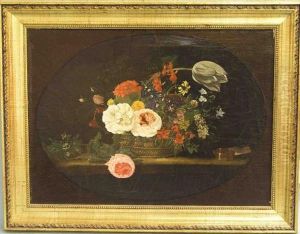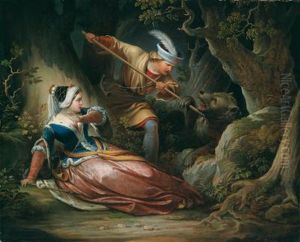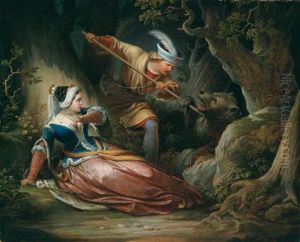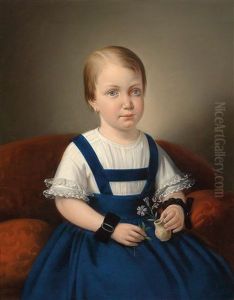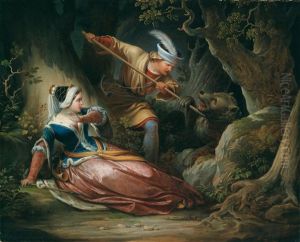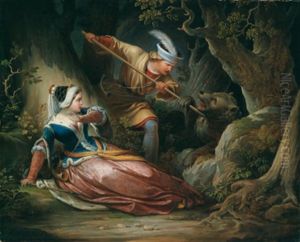Franz Geyling Paintings
Franz Geyling was an Austrian artist known for his work in glass painting, particularly in the creation of stained glass windows, which gained significant recognition during his lifetime. Born on January 21, 1803, in Vienna, Austria, Geyling was both a part of and a contributor to the rich artistic milieu of the city, which was a vibrant center for culture and the arts during the 19th century.
Geyling began his artistic career under the tutelage of his father, who was also a glass painter. This early exposure to the craft of glass painting laid the foundation for what would become Geyling's lifelong passion and profession. He honed his skills and eventually took over his father's workshop. In 1841, he founded his own studio, Geyling'sche Glasmalereianstalt, which became renowned for its high-quality stained glass.
During his career, Geyling's work was characterized by a blend of traditional techniques and innovations in the art of glass painting. He was particularly known for his religious motifs, which adorned many churches and cathedrals across Austria and beyond. His works are distinguished by their vivid colors and intricate designs, which were achieved through a mastery of the medium and an understanding of the interplay between light and glass.
Not merely an artist, Geyling was also an entrepreneur and played a significant role in the revival of glass painting, which had seen a decline in the period before his activity. His studio produced not only ecclesiastical windows but also secular pieces, contributing to the broader appreciation of stained glass as an art form.
Franz Geyling's influence extended beyond his own studio as he trained a number of apprentices who carried on his techniques and styles. His legacy is preserved in the many windows that continue to illuminate sacred and secular spaces with their timeless beauty.
Geyling passed away on September 5, 1875, in Vienna. His contributions to the field of glass painting have left an indelible mark on the art world, making him a significant figure in the history of Austrian art. His workshop continued to operate under the management of his family, maintaining his artistic vision and commitment to quality for years after his death.
